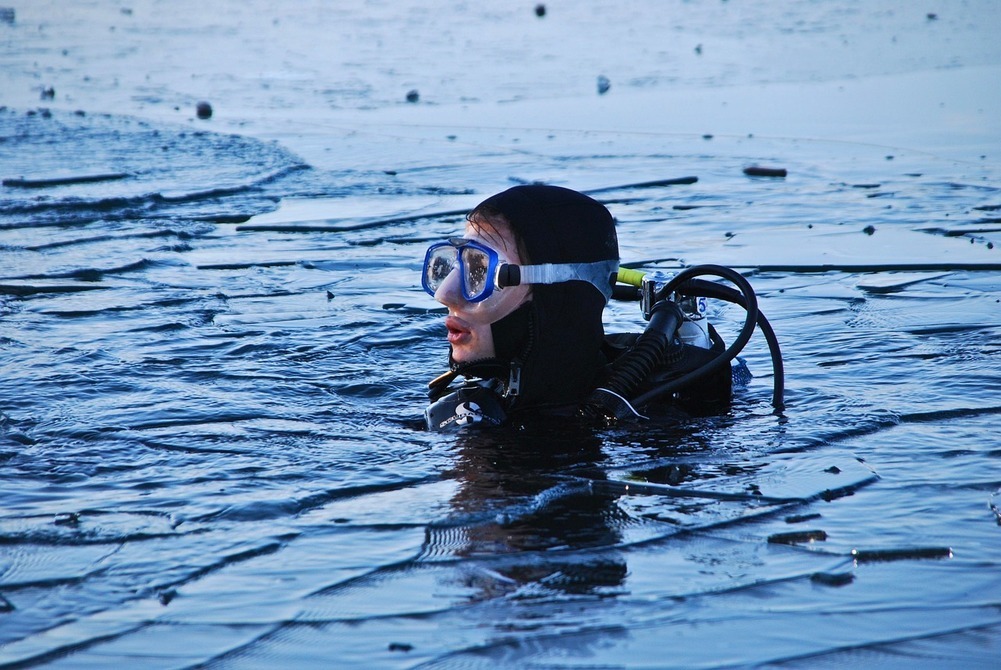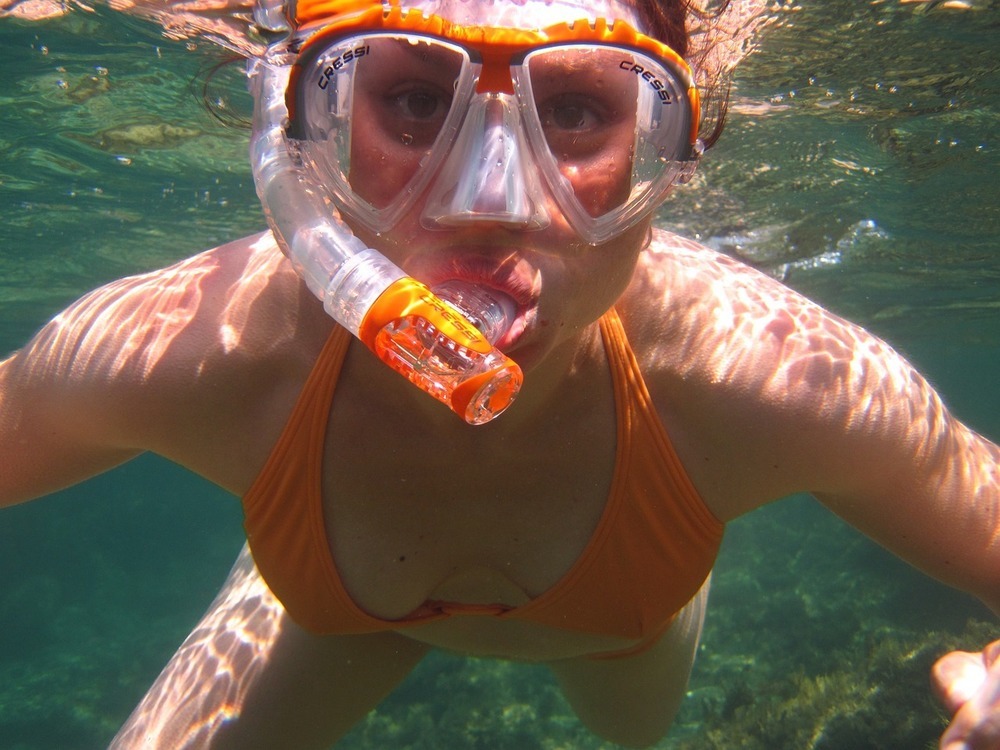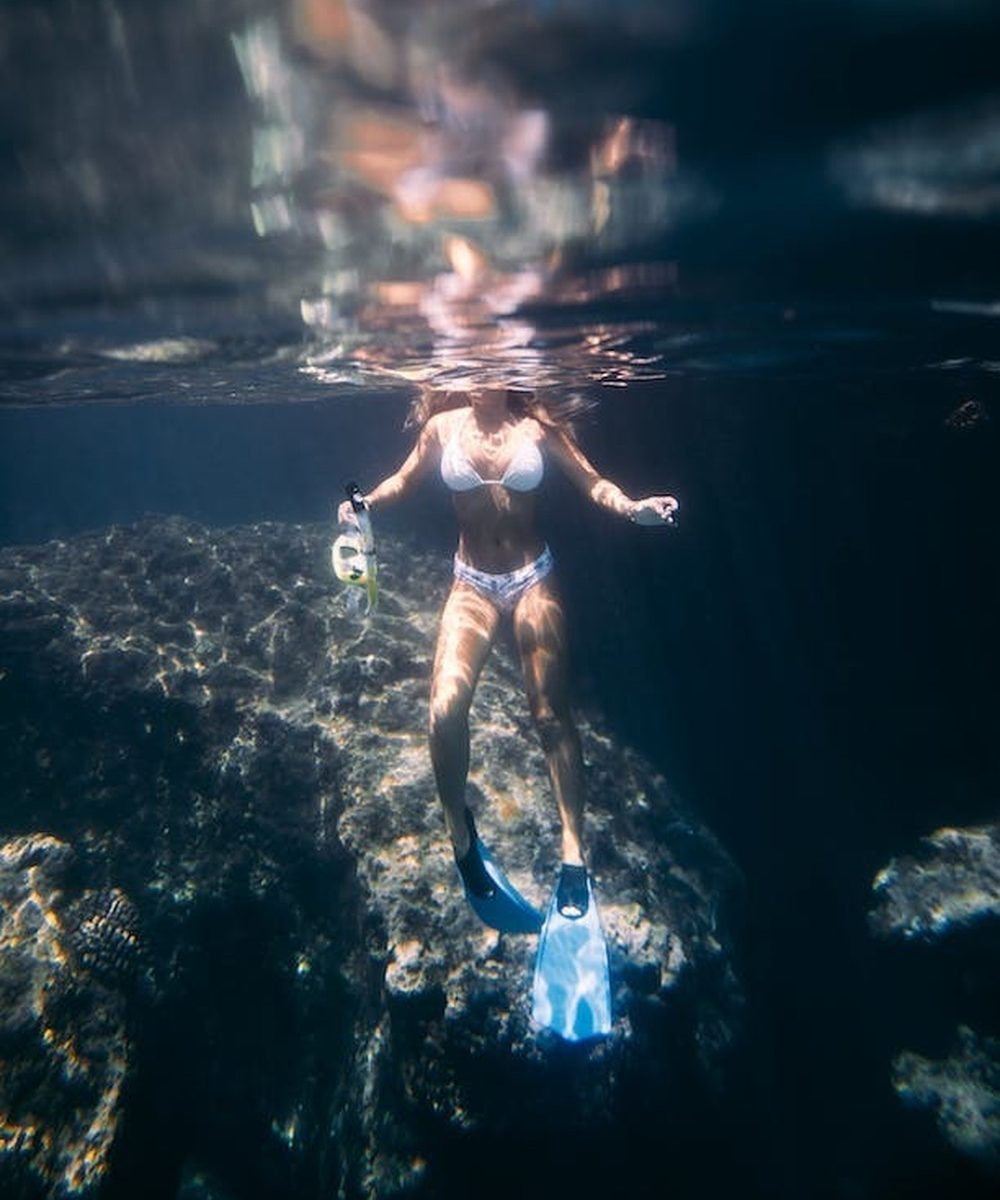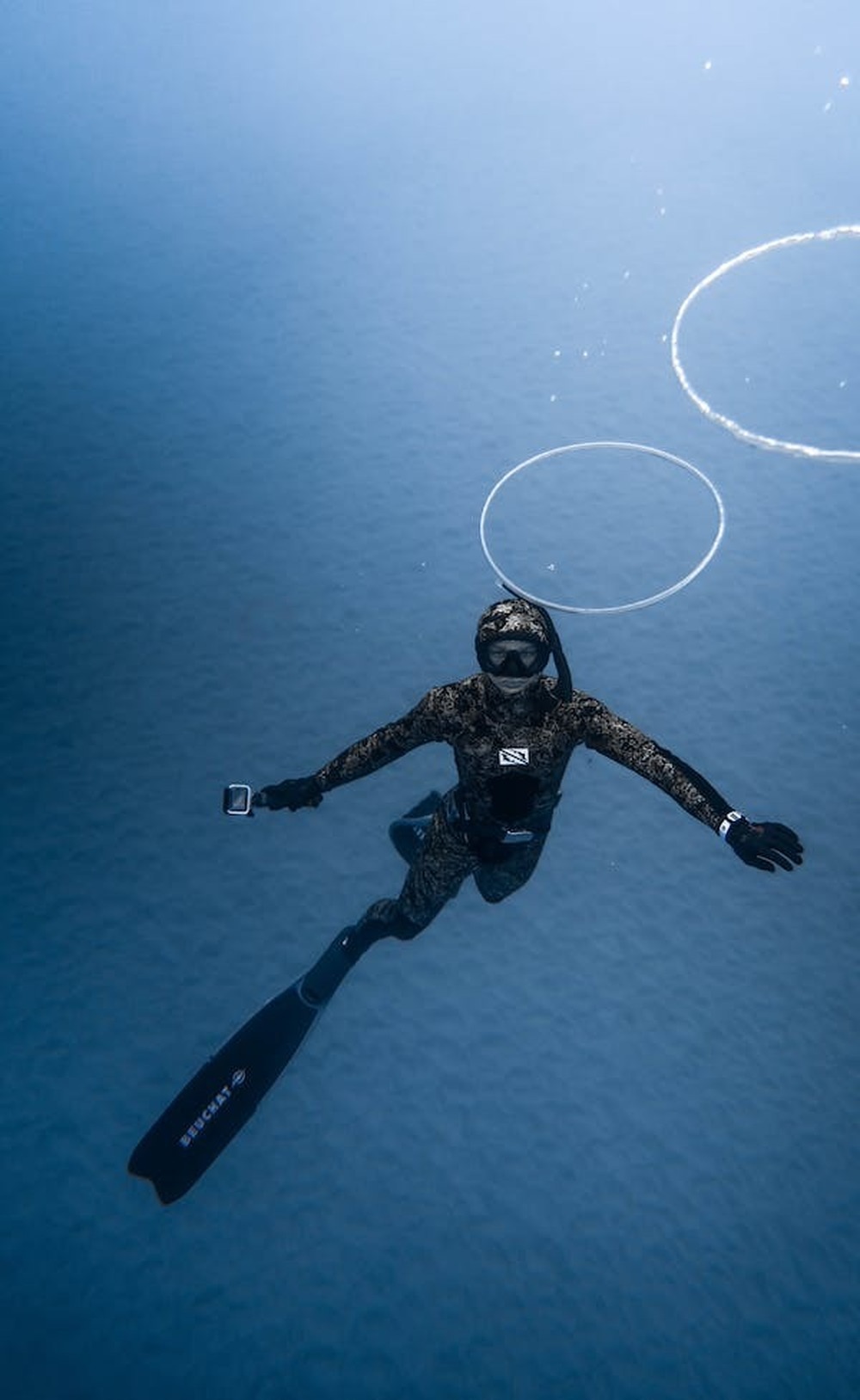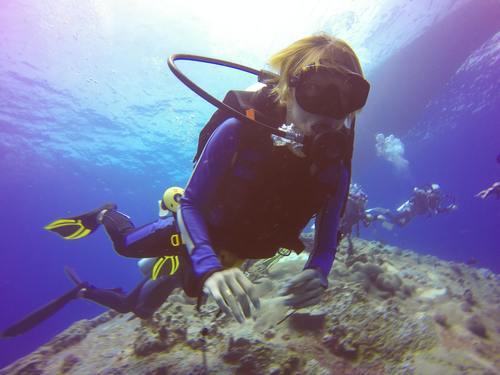Coral reefs, often called the rainforests of the sea, are vibrant ecosystems supporting an astonishing level of marine biodiversity. These underwater paradises are not only vital for the ocean’s health but also crucial for the economies of many coastal communities. They are an irresistible attraction for divers worldwide. However, this fragile underwater world faces an existential crisis caused by climate change, a crisis that threatens to radically alter – and in the worst case, wipe out – these fantastic ecosystems and the diving destinations that depend on them.
An Underwater World in Crisis
Coral Bleaching A Visible Warning
The most visible effect of climate change on coral reefs is coral bleaching. Corals live in symbiosis with microscopic algae called zooxanthellae, residing within their tissues. These algae provide the coral with nutrients through photosynthesis and give them their vibrant colors. When ocean temperatures rise, even by as little as 1-2°C above normal, corals become stressed and expel the algae. This results in the corals losing their color and turning white or pale. A bleached coral is weakened. Without its vital algae, the coral is starving and becomes more susceptible to disease. If elevated temperatures persist, the coral can die. Mass bleaching events, where large sections of a reef are affected, have become increasingly frequent and intense in recent decades. According to the WWF, the Great Barrier Reef, one of the world’s most iconic diving destinations, has suffered six mass bleaching events since 1998, with the one in 2022 affecting an alarming 91% of the reefs.
What is Coral Bleaching?
Coral bleaching is a stress response. The symbiotic relationship between corals and zooxanthellae is disrupted by increased water temperatures. This disruption causes the coral to expel the algae, leading to the loss of color and, eventually, starvation if the stress continues. The University of Miami is actively studying how corals are impacted by the changing climate.
The Great Barrier Reef A Case Study
The Great Barrier Reef serves as a stark example of the devastating effects of climate change. Repeated bleaching events have significantly damaged large portions of this natural wonder. According to the Reef Authority, the Reef has experienced four mass coral bleaching events between 2016 and 2022. In 2016 alone, extreme temperatures caused the death of approximately 30 percent of the Reef’s shallow-water corals.
Ocean Acidification A Silent Threat
Alongside rising temperatures, ocean acidification poses another serious threat. The oceans absorb a significant portion of the carbon dioxide released into the atmosphere. This absorption leads to chemical changes in seawater, making it more acidic. This acidification reduces the availability of carbonate ions, which are essential for corals to build and maintain their calcium carbonate skeletons. According to the Columbia Climate School, the oceans are now experiencing a level of acidification unprecedented in the last 400,000 years. Weakened coral skeletons make reefs more vulnerable to erosion and damage from storms, which are also expected to increase in intensity due to climate change. MDPI research shows that some reefs are already beginning to dissolve, and projections suggest that the majority of coral reefs may have insufficient calcium carbonate for growth as early as 2050.
How Acidification Works
As the ocean absorbs CO2, it reacts with seawater to form carbonic acid. This process lowers the water’s pH, making it more acidic and reducing the concentration of carbonate ions. These ions are the building blocks corals use to create their skeletons, so a decrease in their availability directly hinders coral growth and structural integrity. NOAA explains that this process results in slower coral growth and reduced structural integrity.
The Diver’s Perspective From Vibrant Life to Bleak Landscapes
For divers, the impact of climate change is a stark reality. A healthy coral reef is a kaleidoscope of color and life, teeming with fish, invertebrates, and intricate coral structures. It’s an immersive experience. In contrast, a bleached reef is a ghostly landscape. The vibrant colors are gone, replaced by a monotonous white or pale hue. The once-abundant fish life is diminished, as the coral structures that provided food and shelter degrade. The silence is palpable, a stark contrast to the vibrant sounds of a healthy reef. This is not just an ecological tragedy; it’s a profound loss for anyone who has experienced the magic of a healthy coral reef.
Diver Responsibility
While scuba diving may seem harmless, unintentional contact can cause direct physical damage to coral reefs. PMC research shows that a significant proportion of divers physically interact with reefs, and a quarter of these contacts result in observable damage. Fins, hands, and diving equipment are the most common causes of contact, with cameras accounting for the highest proportion of contacts leading to damage. However, the same study demonstrated that dive operators actively promoting environmental responsibility, for example through programs like Green Fins, experienced significantly lower rates of reef contact. This highlights that while climate change is the primary threat, divers also have a responsibility to minimize their impact.
The Future of Diving Destinations
The consequences of climate change’s impact on coral reefs are catastrophic for diving destinations worldwide. Coral reefs are the very foundation of dive tourism. As reefs bleach and die, biodiversity and visual appeal diminish. This leads to reduced tourism, which has serious economic consequences for communities and regions dependent on the diving industry. According to the World Resources Institute (WRI), coral reefs benefit one billion people globally, and the deterioration of these ecosystems would have devastating consequences. The loss of coral reefs means not only a decrease in the number of dive tourists but also a loss of jobs, income, and the ecosystem services that coral reefs provide, such as coastal protection and fisheries.
Economic Consequences
The economic impact is substantial. For example, the Great Barrier Reef, prior to the recent bleaching events, supported a thriving tourism industry. The decline in coral health directly translates to fewer tourists and lost revenue. The MIT Climate Portal highlights how destinations like the Great Barrier Reef attract over 2 million visitors each year. Degradation of the reef cripples this dive tourism.
Specific Examples of Economic Loss
Many island nations and coastal communities heavily rely on reef-related tourism. The Caribbean, Southeast Asia, and the Pacific Islands are particularly vulnerable. Precise figures on economic losses are still emerging, but studies predict significant declines in tourism revenue as reef health deteriorates. For example, areas in Florida and the Caribbean experienced mass coral die-offs in 2023 because of high temperatures. These kinds of events are expected to become more common.
A Glimmer of Hope?
Despite the alarming forecasts, there is a glimmer of hope. Research shows that some coral species and populations have some capacity to adapt to warmer and more acidic conditions. For example, some corals can replace their heat-sensitive algae with more tolerant varieties. This adaptability, combined with local conservation efforts to reduce other stressors such as pollution and overfishing, may give coral reefs a better chance of survival. Several promising avenues are being explored:
Coral Restoration Projects
Coral nurseries and transplantation efforts are underway in various locations, such as the work being done by the University of Miami. These projects involve growing corals in controlled environments and then transplanting them onto degraded reefs to help restore coral cover and biodiversity. These nurseries often focus on cultivating more resilient coral species.
Assisted Evolution
Scientists are researching ways to enhance coral resilience through techniques like selective breeding. The goal is to identify and propagate corals that are naturally more tolerant to heat stress and ocean acidification, accelerating the natural adaptation process. Cambridge research is being conducted into how climate change is affecting coral reef fish.
Marine Protected Areas (MPAs)
Establishing and effectively managing MPAs can help protect coral reefs from local stressors like overfishing and pollution, giving them a better chance to withstand the impacts of climate change. These areas can serve as refuges for coral populations and help maintain biodiversity. The State of the Environment Report highlights the importance of these areas.
Environmental Responsibility and Education
Dive operators can take specific actions, including: Implementing mooring buoy programs to prevent anchor damage; Providing thorough pre-dive briefings that emphasize reef etiquette; Offering courses on responsible diving practices; Participating in citizen science initiatives; Adopting waste management practices; Using reef-safe sunscreen and promoting its use; and Supporting local conservation efforts. Programs like Green Fins provide a framework for sustainable diving practices.
The Future is Uncertain
The impact of climate change on coral reefs and diving destinations is a complex and urgent challenge. It is not only about preserving beautiful underwater landscapes, but also about protecting marine biodiversity, the economies of coastal communities, and the future of an entire industry. The fate of these ecosystems, and the experiences they offer divers, depends on our ability to act quickly – both globally and locally – to combat climate change and conserve the oceans. It is a future that swims in uncertainty, but a future where we can still influence the outcome. The United Nations stresses the urgency of immediate action to reduce greenhouse gas emissions to protect these ecosystems. NOAA’s Coral Reef Information System is also working to manage the effects of climate change.







